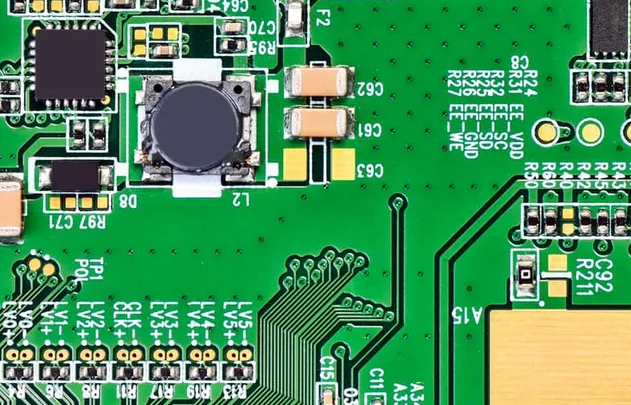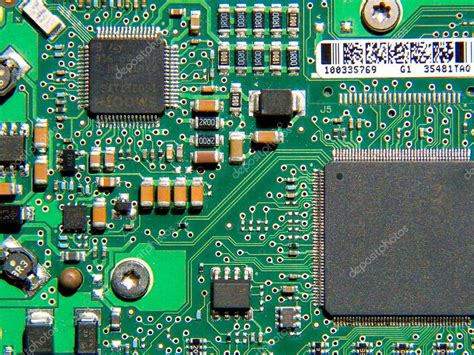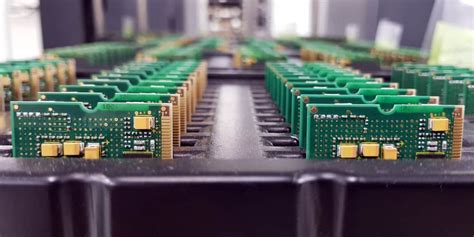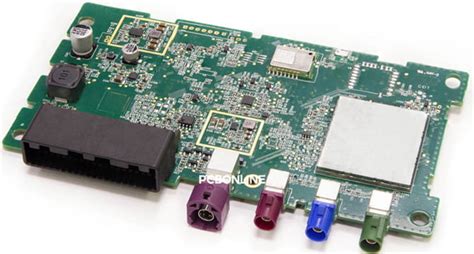4 layer pcb prototype

Key Takeaways
When considering the design and production of a 4 layer PCB prototype, it’s essential to understand the implications of PCB manufacturing. You may find that working with specialized PCB manufacturing companies can streamline your design process while ensuring quality and reliability. The complexity of a 4 layer PCB often leads to additional factors influencing the PCB manufacturing cost, which encompasses material choices, design intricacies, and production volume.
To effectively manage your budget, keep in mind that various elements contribute to the overall expenses in the PCB manufacturing business. For instance, you should consider the choice of materials such as FR-4 versus more advanced substrates, which can significantly affect both durability and cost. In identifying the right manufacturer, you might want to evaluate their expertise with multilayer PCBs as well as their ability to meet specific regulatory standards.
In conclusion, knowing these key aspects can enhance your decision-making process and optimize your 4 layer PCB prototype development. For more insights on PCB manufacturing services and solutions, you may visit Andwin PCB.
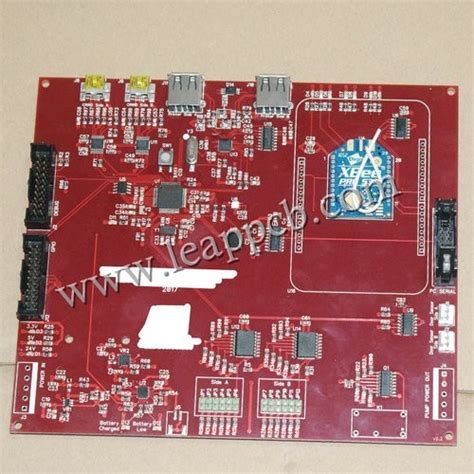
Understanding 4 Layer PCB Prototypes: An Overview
When exploring 4 layer PCB prototypes, it’s essential to understand their significance in the broader context of PCB manufacturing. These prototypes stand at the intersection of complexity and efficiency, allowing for more intricate designs compared to simpler 2-layer options. As you delve into the world of pcb manufacturing, you may notice that many pcb manufacturing companies offer specialized services that cater to prototypes, recognizing the unique demands and challenges they present.
Your choices here impact not just the technical specifications of your project but also the overall pcb manufacturing cost involved. By using a 4-layer configuration, you gain advantages like reduced electromagnetic interference and better signal integrity—crucial factors for modern electronic applications. The decision to pursue a 4-layer PCB prototype often hinges on factors like your specific design requirements, timelines, and budget considerations in the pcb manufacturing business landscape.
In summary, understanding these dynamics will help you make informed decisions while developing your next electronic product prototype. Evaluating different facets such as performance benefits and cost implications will empower you in your journey through the complex realm of PCB technology.

Key Considerations for Designing 4 Layer PCBs
When embarking on the journey of designing a 4 layer PCB prototype, there are several key considerations to keep in mind. First and foremost, you’ll want to focus on the layout and regulations pertaining to your project’s specific needs. Each layer in a 4 layer PCB plays a crucial role, whether it’s for power distribution, ground connections, or signal integrity. Ensuring that you have clear separation of signal traces and optimal layer stacking is vital to minimize interference and maintain the performance of your design.
Additionally, it’s essential to understand the implications of choosing different materials, as this will directly affect both the pcb manufacturing cost and overall quality. Selecting materials that can sustain high frequencies or thermal applications can significantly enhance your product’s efficacy. Furthermore, choosing the right pcb manufacturing companies is critical; you want to partner with those who have a solid reputation for producing high-quality prototypes along with reliable service.
As you plan your prototype, consider that pcb manufacturing is not just about producing the boards themselves but also encompasses understanding lead times and testing capabilities offered by your chosen manufacturers. Don’t forget to factor in production scalability; it’s prudent to work with a manufacturer who can accommodate future orders without compromising quality. By being mindful of these aspects, you can navigate through potential challenges while optimizing both functionality and cost-effectiveness in your project’s development journey.
The Advantages of Using 4 Layer PCB Technology
When it comes to pcb manufacturing, adopting 4 layer PCB technology can provide several advantages that enhance the functionality and efficiency of your electronic projects. First and foremost, the additional layers allow for more complex circuitry, which means that you can incorporate more components into a smaller area without sacrificing performance. This is particularly beneficial for compact electronic devices where space is limited. Moreover, the design flexibility provided by 4 layer PCBs enables you to create intricate routing without compromising on signal integrity.
With higher density designs, you also benefit from improved signal quality due to better grounding and power distribution techniques. This leads to less electromagnetic interference, which is a critical factor in high-speed applications. Additionally, manufacturers specializing in pcb manufacturing companies often find that producing 4 layer PCBs can be more cost-effective in terms of materials and assembly compared to managing multiple simpler boards. The overall pcb manufacturing cost per unit can decrease when factoring in the increased reliability and lower failure rates associated with multi-layer designs.
If you’re considering entering the pcb manufacturing business, understanding these advantages can help you position your offerings strategically within a competitive market. The integration of robust engineering practices in designing 4 layer PCBs not only meets current market demands but also sets a foundation for innovation as industries continue to evolve. Embracing this technology will allow you to deliver superior products that meet customer expectations while remaining economically viable.
Selecting the Right Manufacturer for Your 4 Layer PCB Prototype
When it comes to pcb manufacturing, choosing the right manufacturer for your 4 layer PCB prototype is crucial for ensuring quality and efficiency. With a plethora of pcb manufacturing companies available, your first step should be to research and evaluate their reputation in the industry. Look for firms that have a proven track record of delivering high-quality products while meeting deadlines. You might want to consider those who specialize in 4 layer PCBs, as they will have the necessary expertise to handle your specific requirements effectively.
Next, assess the pcb manufacturing cost and ensure it aligns with your budget without compromising on quality. It’s wise to obtain quotes from multiple manufacturers, but keep in mind that the lowest price may not always equate to the best value. Focus on companies that provide transparent pricing models and are willing to discuss cost factors at length. You can ask about potential hidden charges that may arise during production.
Moreover, consider a manufacturer’s technological capabilities and their use of advanced materials, as these can significantly impact the performance of your 4 layer PCB prototype. Technologies like automated testing or specialized fabrication techniques can indicate a company’s commitment to quality production.
“Choosing a manufacturer who prioritizes both innovation and reliability will set you up for success in your pcb manufacturing business.”
Finally, establish communication with your selected manufacturers to gauge their responsiveness and customer service. A reliable partner should be open to discussing changes or addressing concerns promptly throughout the production process, ensuring a smooth journey from prototype design to finished product. By taking these steps, you will be well-positioned to select a manufacturer that meets your needs effectively, thereby enhancing your project’s overall success.
Common Applications for 4 Layer PCBs in Electronics
4 Layer PCBs are widely utilized across various fields in electronics. Their enhanced capabilities make them suitable for applications requiring more complexity than what traditional 2 layer designs can offer. For instance, you might find 4 layer PCBs in telecommunications devices, where high-frequency signals necessitate superior signal integrity and minimal interference. Similarly, in the realm of consumer electronics, such as smartphones and tablets, the compact nature of these PCBs allows manufacturers to design slimmer devices without sacrificing functionality. The automotive industry also benefits significantly; many electronic control units (ECUs) use 4 layer PCB prototypes to manage various vehicle functions effectively while ensuring reliability under extreme conditions.
Moreover, as you consider the pcb manufacturing aspect, it’s essential to keep in mind that partnering with reputable pcb manufacturing companies can greatly affect the performance and durability of your product. The ability to manage complex routing and provide ample ground and power planes on a 4 layer PCB prototype allows you to achieve a higher density than successful prototypes using fewer layers. When evaluating your project’s potential scope, understanding the demands of your application will guide you toward selecting the right route in terms of both design and pcb manufacturing cost.
You should also note that innovations in the pcb manufacturing business are continuously occurring; hence staying updated will enable you to leverage advancements that can further enhance your electronics projects. By embracing these technologies, you position yourself for success in an ever-evolving market landscape.
Steps to Take Before Ordering Your 4 Layer PCB Prototype
Before placing an order for your 4 layer PCB prototype, it is crucial to take several steps to ensure a smooth and effective PCB manufacturing process. First, you should meticulously review your design files for any errors or inconsistencies, as mistakes can lead to increased costs and delays. Ensure that you are using the correct specifications that meet your project’s requirements, as this will impact the performance and reliability of the final product. Next, research various PCB manufacturing companies to find a reliable partner that has experience with 4 layer PCBs. Consider their reputation, technology capabilities, and customer service track record. Request quotations from multiple manufacturers while taking into account the associated pcb manufacturing cost, ensuring you are aware of any additional fees for expedited services or unique requirements.
Additionally, it might be worthwhile to inquire about their production capacity and turnaround times. Assess whether the selected manufacturer can accommodate your timeline without compromising on quality. It’s also essential to communicate clearly about your project goals with potential manufacturers; this level of transparency can help align expectations and facilitate smoother collaboration throughout the pcb manufacturing business process. By taking these steps before placing an order, you will set a solid foundation for your project, minimizing potential issues during production and ensuring successful outcomes for your 4 layer PCB prototype.
Cost Factors to Consider When Producing 4 Layer PCBs
When producing 4 layer PCBs, there are several cost factors you should not overlook. Understanding the pcb manufacturing process is crucial for estimating the overall costs accurately. The complexity of your design can significantly impact the pcb manufacturing cost. Features such as finer traces, increased layer counts, and specific materials can escalate costs, so you must define requirements clearly before engaging with pcb manufacturing companies.
Another important consideration is the quantity of prototypes you plan to order. Many pcb manufacturing companies offer discounts for larger orders, which can lower your unit price substantially. Therefore, assessing whether you need small batches or larger production runs can make a difference in the cost-effectiveness of your project.
Additionally, the choice of materials and finishes can affect pricing as well — high-performance options generally come with increased costs. Ensure that you balance your budget constraints with the desired quality standards for optimal results.
Finally, it’s prudent to compare quotes from multiple pcb manufacturing businesses as prices can vary widely based on capabilities and technologies employed. By taking these factors into account, you can better plan for a successful PCB prototype that aligns with your budgetary and functional needs while ensuring its capability to meet market demands.
The Future of PCB Prototyping: Trends and Innovations
As you look ahead in the field of PCB prototyping, it’s clear that innovative trends are reshaping the landscape of 4 layer PCBs. Advances in technology continue to enhance efficiency and capability in PCB manufacturing. For instance, emerging techniques such as additive manufacturing and automated assembly are becoming increasingly popular among PCB manufacturing companies, allowing for faster turnaround times and reduced error rates during production. As you contemplate your next project, consider how these innovations can positively impact your pcb manufacturing cost. Furthermore, the demand for miniaturization in electronics is driving the evolution of designs that leverage 4 layer PCB technology more effectively than ever before. In this context, understanding how to select the right materials and processes becomes pivotal for creating prototypes that meet today’s rigorous specifications while also remaining cost-effective for your pcb manufacturing business. Adopting these trends not only ensures that you stay competitive but also enhances the functionality of your end products, paving the way for a future where your designs can do more in less space.
Conclusion
In summary, leveraging 4 layer PCB prototypes offers numerous advantages for your electronics projects. They provide a balanced approach to complexity and cost, making them suitable for a variety of applications, from consumer electronics to industrial devices. As you engage with PCB manufacturing companies, understanding the specific PCB manufacturing costs involved is crucial for evaluating your overall project budget. The choice of a reliable PCB manufacturing business can significantly impact both the quality and performance of your prototype. As technology continues to advance, staying informed about the latest trends and innovations in PCB manufacturing will enable you to make well-informed decisions that benefit your projects in the long run. Ultimately, by carefully considering these factors, you can enhance your design process and lead your developments toward successful outcomes in the competitive electronics landscape.
FAQs
What is a 4 layer PCB prototype?
A 4 layer PCB prototype is a printed circuit board that consists of four conductive layers. Typically, this technology allows for more complex circuit designs and better signal integrity.
Why should I choose a 4 layer PCB over a 2 layer PCB?
Choosing a 4 layer PCB over a 2 layer option enables you to manage higher density circuits with reduced electromagnetic interference. It provides improved routing capabilities and better power distribution.
How does the process of pcb manufacturing differ for 4 layer PCBs?
The pcb manufacturing process for 4 layer PCBs involves multiple steps that are more intricate than those for 2 layer boards. This includes aligning the layers and ensuring proper lamination to achieve the desired electrical performance.
What factors influence the pcb manufacturing cost for 4 layer prototypes?
Factors that affect pcb manufacturing cost include material choice, board size, the complexity of the design, and the number of prototypes required. Additionally, quality standards set by different pcb manufacturing companies might impact costs.
Are there specific applications where 4 layer PCBs are preferred?
Yes, 4 layer PCBs are commonly used in applications such as high-speed computing, telecommunications, and consumer electronics, where enhanced performance and reliability are crucial.


